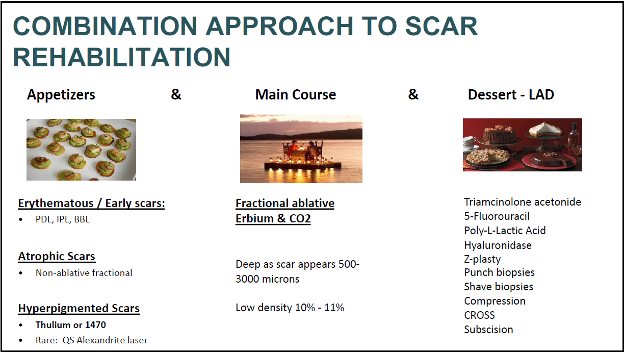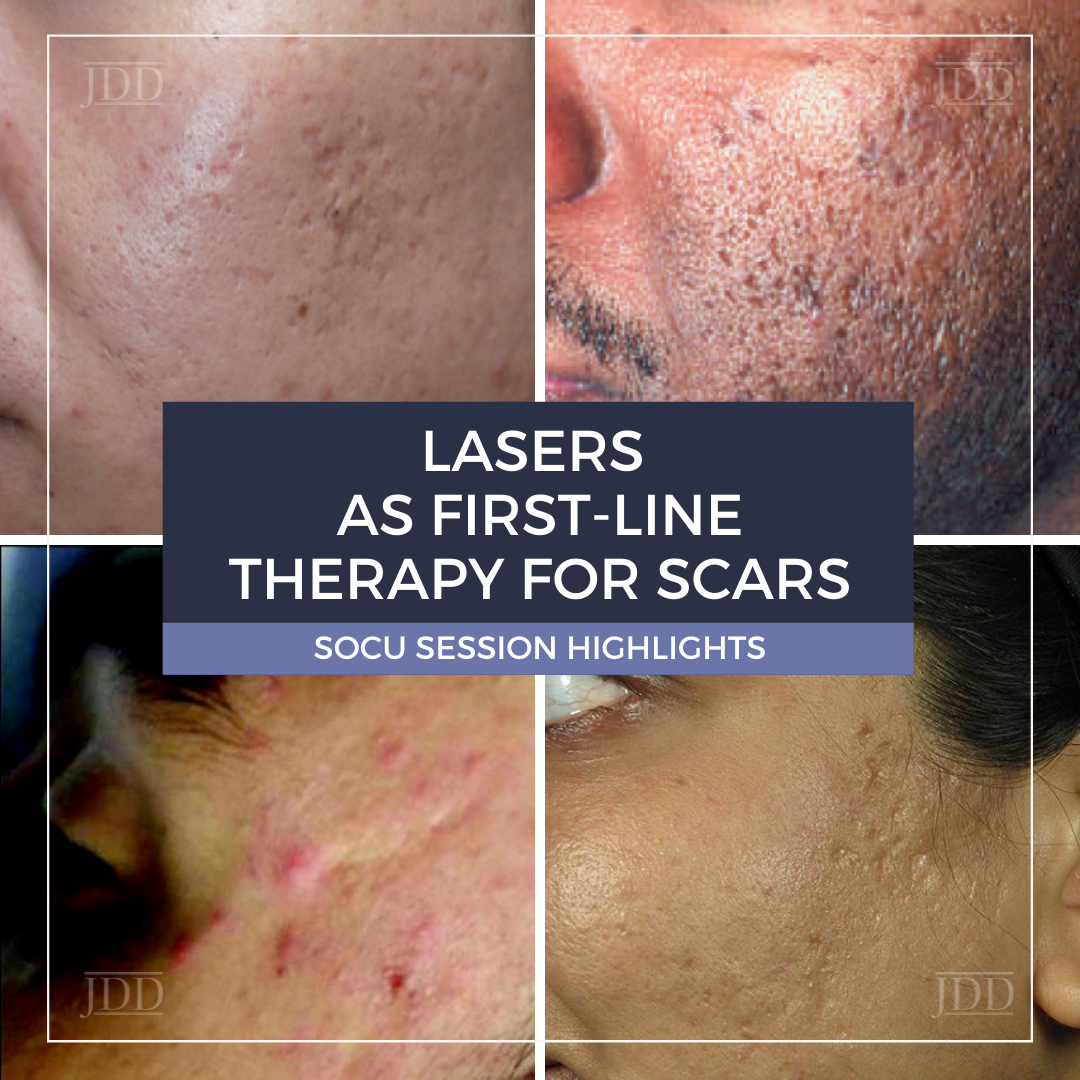Some of the most rewarding patients to help in dermatology are those who struggle with keloids and scars. The field remains an area of active research, and we are continually learning about the pathogenesis and optimal treatment modalities of scars. On Day 1 of the 2021 Skin of Color Update virtual conference, we were fortunate to hear from Dr. Jill Waibel MD, a world-recognized leader and innovator in dermatologic laser surgery with a particular passion for treating scar patients through a multi-modal and customized approach.
Scar Biology and the Approach to Scar Treatment
Dr. Waibel began her talk by highlighting the complexities of the biology of scars. Scarring in humans is affected by numerous factors including: the size and depth of the injury, genetic factors, location of the insult, hormonal influences, chronic inflammation, wound tension, and delayed epithelization (>21 days). Considering the complexities of the problem, it is critical that we as dermatologists institute a multi-layered approach to treatment that Dr. Waibel likens to a meal at a nice restaurant.

The above table outlines an excellent conceptual framework that we can employ to best rehabilitate a given scar, with different modalities based on the scar’s color, texture, and elevation or depression.
In addition, she advocated for a “top-down” approach to scar treatment. Pigmentary issues with the scar are addressed with the 1927nm laser, followed by an ablative fractional laser (AFL). Hypopigmented scars can be a challenge, but some effective treatments are non-ablative fractional laser (AFL) and laser-assisted delivery (LAD) of Bimatoprost.
Next, we address the texture of the scar. For atrophic scars, punch biopsies, Z-plastics, subcision, AFL, and LAD with Poly-L-Lactic acid are valuable techniques. For Hypertrophic scars, PDL and AFL are used with excellent effect.
For more detailed information, Dr. Waibel shared with us various scar algorithms that she has published that can help guide us when thinking about how to best approach the treatment of both traumatic and conventional scars.
-
- Seago, Meghan, et al. “Laser treatment of traumatic scars and contractures: 2020 international consensus recommendations.” Lasers in surgery and medicine 52.2 (2020): 96-116.
- Gold, Michael H., et al. “Updated international clinical recommendations on scar management: part 2—algorithms for scar prevention and treatment.” Dermatologic Surgery 40.8 (2014): 825-831.
Laser Assisted Drug Delivery
One of the powerful pearls Dr. Waibel shared with us is the use of fractional ablative lasers such as Erbium:YAG and CO2 to perform laser-assisted drug delivery. These lasers allow 100-4000 micron channels to be created in the scar to utilize various topical agents more effectively. Some examples of this include:
-
- Treatment of post-inflammatory hyperpigmentation: Triamcinolone acetonide
- Hypertrophic Scar: Triamcinolone acetonide or 5-Fluorouracil
- Atrophic Scar: Poly-L-lactic acid
- Hypopigmented scar: Bimatoprost
Other pearls include:
-
- Spacing treatments 2-3 months apart
- Utilizing multiple lasers in same session
- Meticulous post-operative care
Keloids, a Treatment Dilemma with Mysterious Biology
There are more questions than answers when it comes to the treatment of keloids with lasers. There is a variability of response to laser treatment, and there is the possibility of worsening or creating new keloids. One of the exciting findings that Dr. Waibel highlighted is that the central portion of keloids tends to be richer in collagen, while the periphery exhibits more significant vascularity. Keloid biology is a promising area of research and may lead to different treatment strategies in the future. Other recommendations she shared were to avoid suturing keloid excisions and to consider treating the base of the excision with AFL at 600-micron depth and 10% density followed by triamcinolone 10mg/ml.
This information was presented by Dr. Jill Waibel at the 2021 Skin of Color Update virtual conference held on September 10-12-2021. The above highlights from her lecture were written and compiled by Dr. Sang Kim.
Did you enjoy this article? Find more on Skin of Color Dermatology here.

